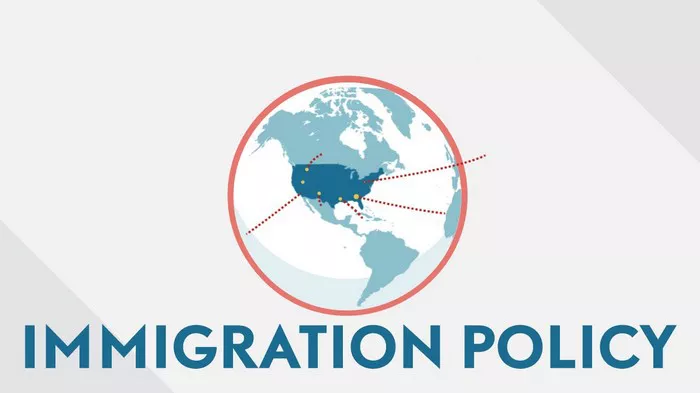Immigration policies serve as the backbone of a nation’s approach to managing the influx of foreign individuals into its borders. These policies dictate who is eligible to enter a country, under what circumstances, and with what rights and responsibilities. In an increasingly interconnected world, immigration policies have become a crucial aspect of national security, economic prosperity, and social cohesion. This article aims to provide a comprehensive overview of immigration policies, exploring their objectives, components, and implications.
What are Immigration Policies?
Immigration policies encompass a set of rules, regulations, and procedures established by governments to govern the movement of people across national borders. These policies are shaped by a multitude of factors, including historical context, political ideologies, economic considerations, and societal values. At their core, immigration policies aim to regulate the flow of migrants, balancing the interests of the state with the rights of individuals.
Objectives of Immigration Policies
Immigration policies typically pursue several key objectives:
1. National Security: One of the primary goals of immigration policies is to safeguard the security and integrity of the nation. Governments implement measures to screen incoming individuals for potential security threats, such as criminal backgrounds or affiliations with terrorist organizations.
2. Economic Growth: Immigration policies often seek to attract skilled workers, entrepreneurs, and investors who can contribute to the host country’s economy. By facilitating the entry of talented individuals, countries aim to fill labor shortages, drive innovation, and stimulate economic growth.
3. Cultural Integration: Immigration policies may include provisions for promoting the integration of migrants into the host society. This can involve language training, cultural orientation programs, and initiatives to foster social cohesion and mutual understanding.
4. Humanitarian Considerations: Many immigration policies incorporate humanitarian principles, providing refuge and protection to individuals fleeing persecution, violence, or natural disasters. Governments establish asylum and resettlement programs to offer assistance to those in need of international protection.
5. Controlled Migration: Immigration policies seek to ensure that migration flows are managed in a controlled and orderly manner. This may involve setting quotas, establishing visa categories, and implementing border enforcement measures to regulate the entry and exit of migrants.
Components of Immigration Policies
Immigration policies consist of various components, each serving a specific function within the broader framework:
1. Visa Systems: Visa systems define the categories of individuals eligible to enter a country and the conditions under which they may do so. These categories may include tourists, students, skilled workers, family members of citizens or residents, and refugees. Visa requirements vary depending on factors such as nationality, purpose of travel, and intended duration of stay.
2. Border Controls: Border controls encompass measures implemented at ports of entry to monitor and regulate the movement of people across international borders. These measures may include passport checks, visa validation, biometric screening, and customs inspections.
Border enforcement agencies are responsible for enforcing immigration laws and preventing unauthorized entry.
3. Immigration Enforcement: Immigration enforcement involves the detection, apprehension, and removal of individuals who are in violation of immigration laws. This may include undocumented migrants, visa overstays, and individuals engaged in illegal employment or criminal activities. Immigration authorities conduct enforcement operations to maintain the integrity of the immigration system and uphold the rule of law.
4. Asylum and Refugee Policies: Asylum and refugee policies govern the process of granting protection to individuals fleeing persecution, war, or violence in their home countries. These policies establish criteria for determining refugee status, adjudicating asylum claims, and providing assistance to refugees resettled within the host country.
5. Integration Programs: Integration programs aim to facilitate the social, economic, and cultural integration of migrants into the host society. These programs may include language classes, job training, housing assistance, and access to healthcare and education services. By promoting integration, governments seek to foster mutual respect, tolerance, and inclusion among diverse communities.
Implications of Immigration Policies
Immigration policies have far-reaching implications for both sending and receiving countries, as well as for migrants themselves:
1. Economic Impact: Immigration policies can have significant economic consequences, influencing labor markets, productivity levels, and public finances. Skilled migration can alleviate labor shortages and stimulate innovation, while uncontrolled migration may strain social services and exacerbate unemployment.
2. Social Dynamics: Immigration policies shape the demographic composition and cultural diversity of societies, influencing social cohesion, identity formation, and intergroup relations. Effective integration policies can promote social inclusion and shared values, while exclusionary policies may fuel discrimination and xenophobia.
3. Political Dynamics: Immigration policies are often contentious issues in political discourse, reflecting competing interests and ideologies. Debates over immigration reform can polarize public opinion, influence electoral outcomes, and shape the political landscape of nations.
4. Human Rights: Immigration policies intersect with fundamental human rights principles, such as the right to seek asylum, the right to family unity, and the prohibition of arbitrary detention. Upholding human rights standards is essential for ensuring the dignity and well-being of migrants, regardless of their legal status.
5. Global Migration Governance: Immigration policies are increasingly subject to international norms and agreements, as countries grapple with the complexities of global migration governance. Multilateral initiatives, such as the United Nations Global Compact for Safe, Orderly and Regular Migration, aim to promote cooperation and coordination among nations to address migration challenges collectively.
Conclusion
In conclusion, immigration policies play a pivotal role in shaping the dynamics of migration and influencing the social, economic, and political landscape of nations. By understanding the objectives, components, and implications of immigration policies, stakeholders can engage in informed dialogue and collaboration to develop fair, effective, and humane approaches to managing migration in an interconnected world. As societies continue to grapple with the complexities of migration, fostering inclusive and sustainable immigration policies remains essential for building prosperous and resilient communities for generations to come.


